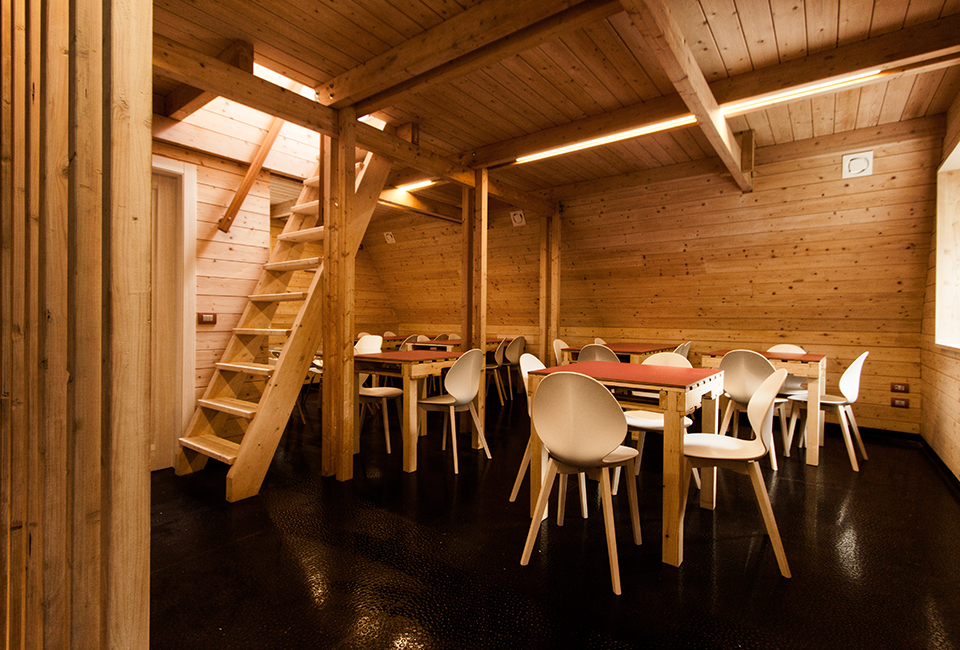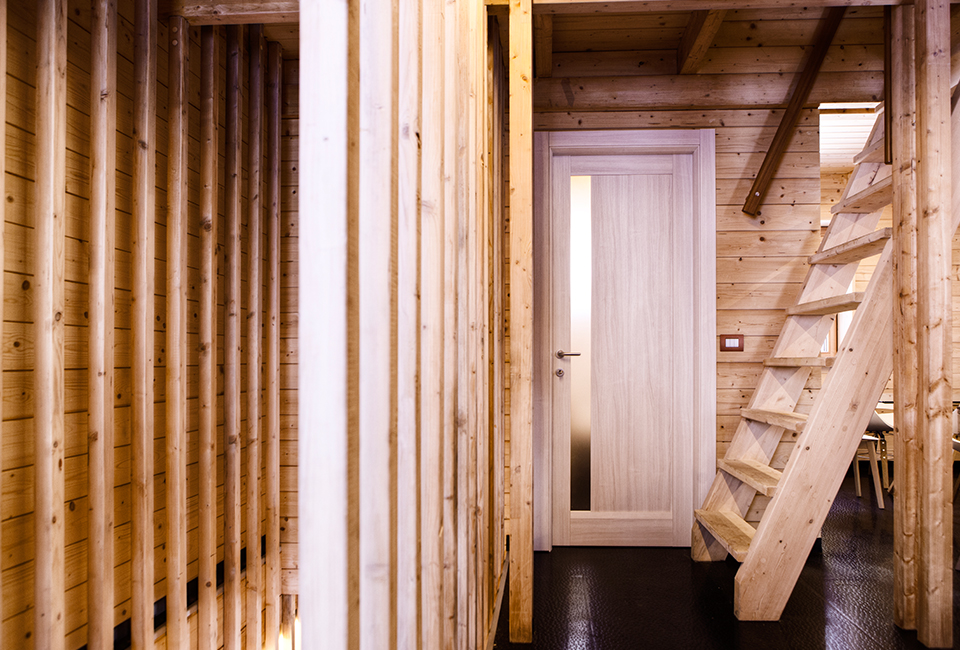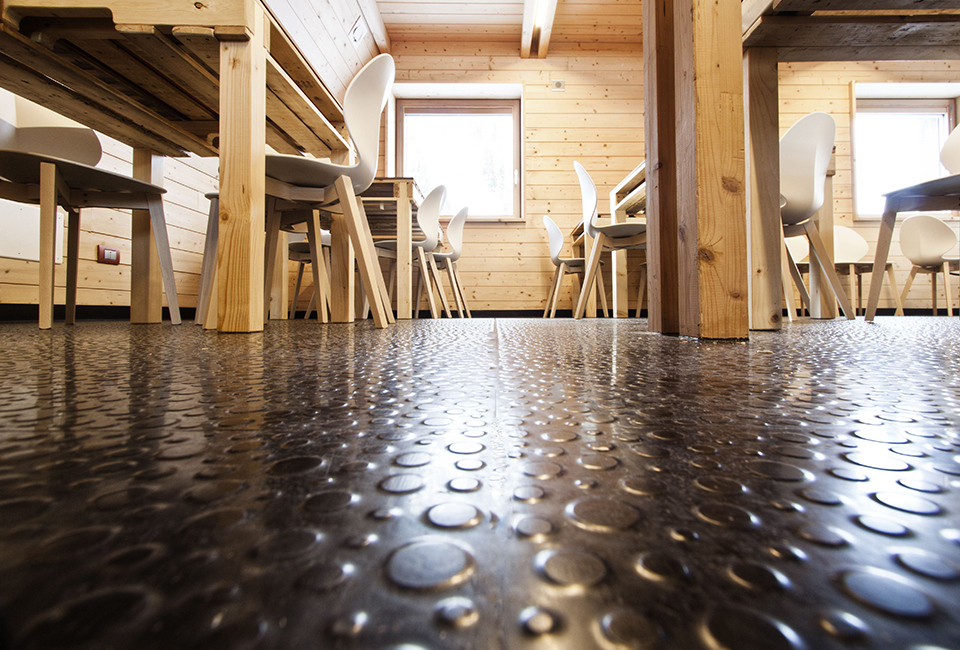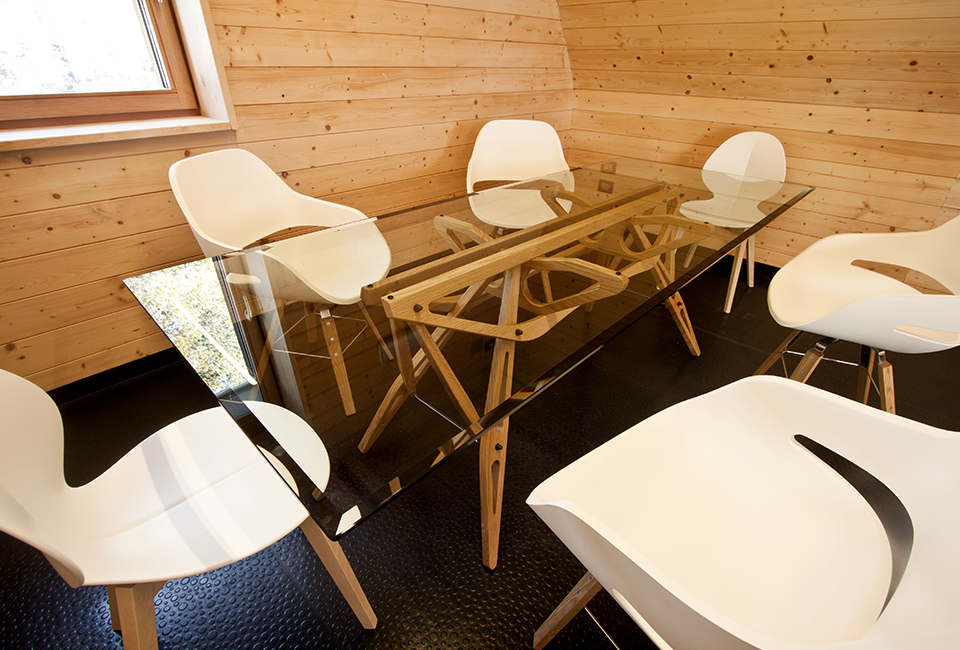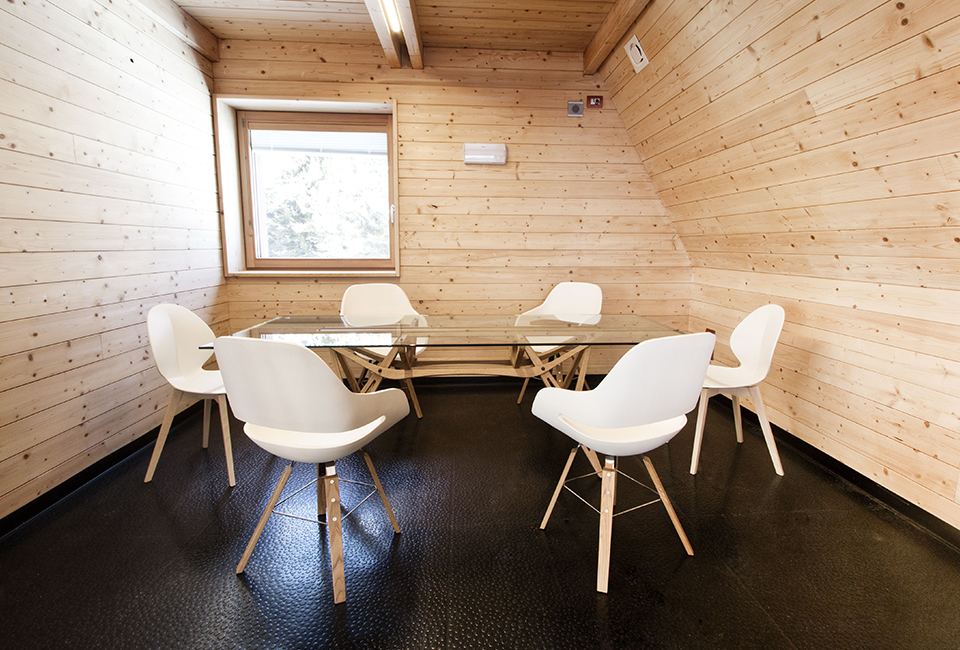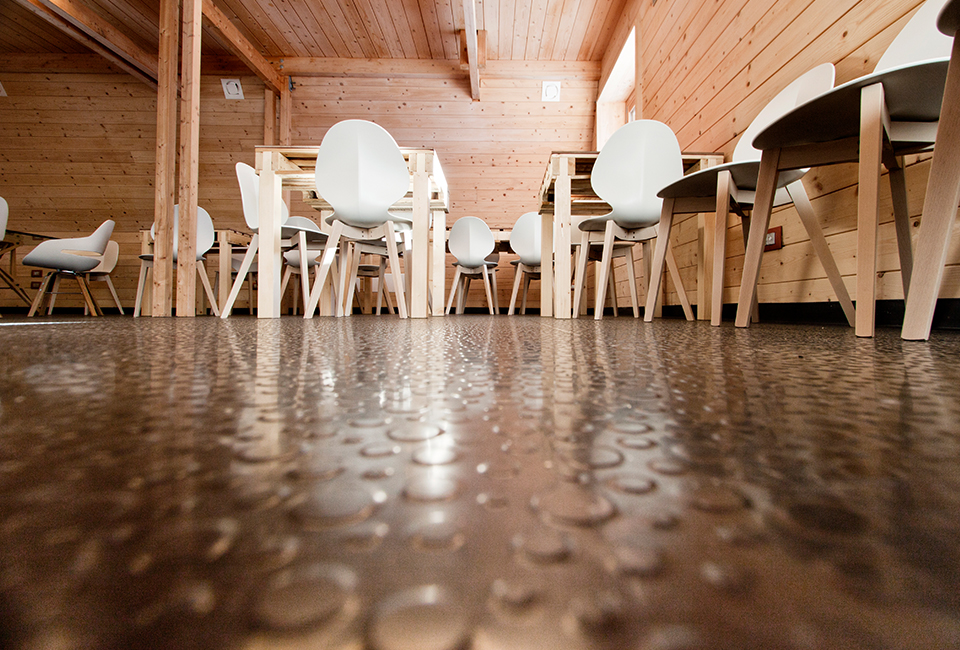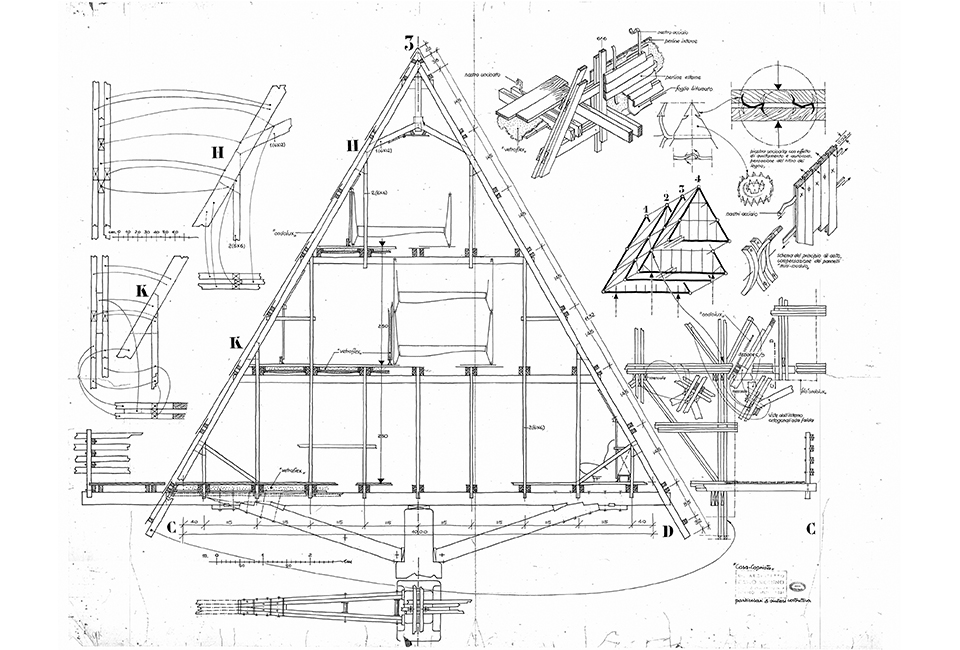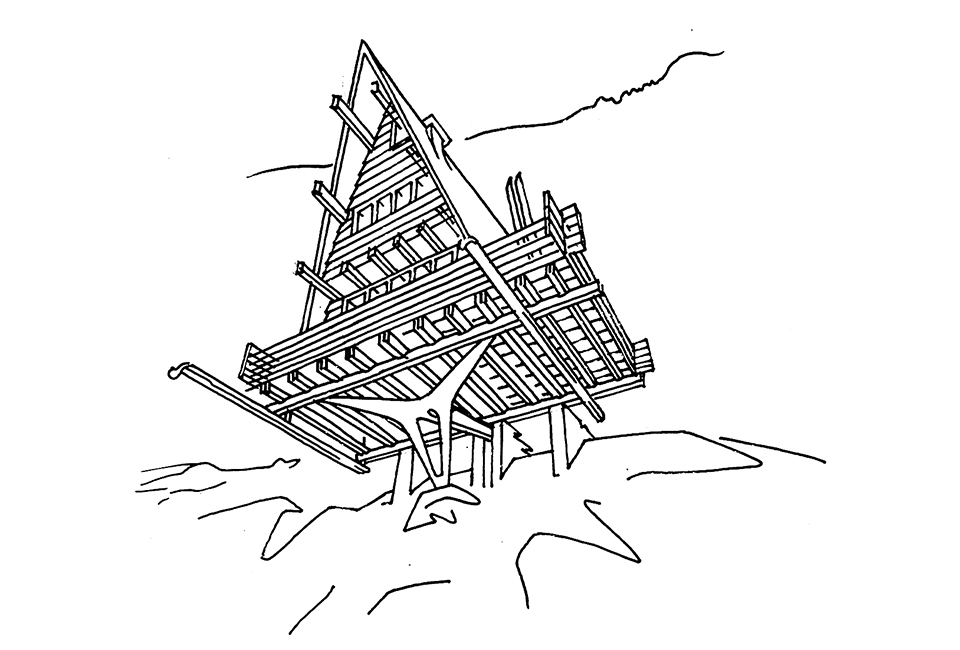In 1954 Carlo Mollino presented an "ideal house" for the 10th Triennale di Milano. It was a mountain house called Casa Capriata. The project "of a house with a timber structure" had been in the works since 1946 but sadly it had never saw conclusion before Mollino’s death. Until the Polytechnic of Turin and the municipality of Gressoney Saint Jean (Aosta Valley) decided to honor the Turinese architect by actually building the Casa, at the altitude of 2100 meters, near the top terminal of the Weissmassen chairlift. The new "Carlo Mollino" shelter has opened in 2014.
Carlo Mollino's "mountain architecture" is a recurring theme in his body of work, resulting in nearly 50 buildings designed and built between 1929 and 1972. Casa Capriata was meant to be (in the words of Liliana Bazzanella, who contributed a book on the project) "an example of aerial architecture, lifted from the ground, a reinterpretation of the walser architecture from the high valley of Gressoney".
The Casa Capriata building project is meant to explore the experimental character of the original draft, "almost a manifesto of skillful experimentation" in construction materials, refined building techniques that prove to be at the same time innovative and based on tradition.
Mollino himself foresaw the use of (for the times) state-of-the-art materials to provide effective thermal isolation and comfort. Following in these footsteps, today Casa Capriata is a low-emission building, able to do without fossil fuels.
A rubber flooring was envisioned by Mollino himself in his original project: the choice made at the time was the now-classic "round studded" BS design by ARTIGO. Inspired by the values of innovation and pushing-the-boundaries that define the whole project, we were able to provide the building team with a "modern take" on the round stud: the Zero4 flooring, designed by Sottsass Associati.
Unanimously adopted, Zero4 has become a defining feature of the building. Its dynamic, "spatially-aware" surface creates a strong, bold match with the natural wood of the walls and the ceiling, in a project that can be seen as an ideal meeting, across time, of two great architects…
















